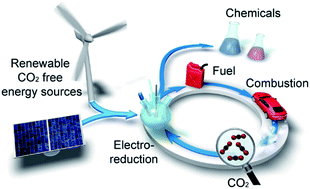Current progress in electrocatalytic carbon dioxide reduction to fuels on heterogeneous catalysts
Abstract
As a promising and important carbon source, utilization of carbon dioxide (CO2) can effectively solve the energy crisis caused by fossil resource consumption and the environmental problems arising from the emission of CO2. The electrocatalytic method is currently a promising research method for CO2 reduction; however, it faces the problems of low product selectivity and poor faradaic efficiency (FE). Therefore, the design of effective catalysts with lower overpotential, high FE, and product selectivity is key consideration for the development of electrochemical CO2 reduction (CO2RR). Herein, we summarize the current research progress in the electrocatalytic reduction of CO2 to fuels on heterogeneous catalysts. Progress in the electrocatalytic reduction of two types of products, C1 products (CO, HCOOH, CH3OH, CH4) and C2 products (CH3CH2OH and C2H4), are discussed. The catalytic activity, FE, product selectivity, electrocatalytic mechanisms, and challenges faced in terms of product selectivity and catalytic activity stability in electrochemical CO2 reduction are discussed. This review can provide effective guidance for the design of effective catalysts with high activity, product selectivity, FE, and stability.

- This article is part of the themed collection: Journal of Materials Chemistry A Lunar New Year collection 2021


 Please wait while we load your content...
Please wait while we load your content...